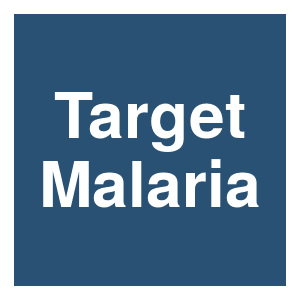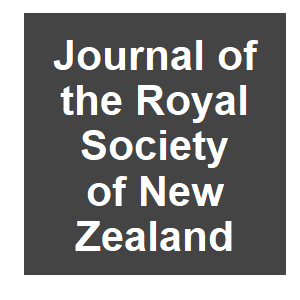
Keywords: regulations

|
Explained | The problem with India’s new guidelines on genetically modified insectsS. Naik, The Hindu, 2023.
India’s bioeconomy contributes 2.6% to the GDP. In April 2023, the Department of Biotechnology (DBT) released its ‘Bioeconomy Report 2022’ report, envisioning this contribution to be closer to 5% by 2030. This ambitious leap – of $220 billion in eight years – will ... Keywords: drosophila, engineered genetic incompatibility, gene drive synthetic, melanogaster, regulations, safety, synthetic species, underdominance |

|
Guidelines and Standard Operating Procedures for Research on Genetically Engineer Insects, 2023Government of India, Government of India, 2023.
Department of Biotechnology, Government of India is delighted to release "Guidelines and Standard Operating Procedures for Research on Genetically Engineered Insects, 2023". This document is pertinent for enabling potential of genetic engineering in insect research to ... Keywords: drosophila, engineered genetic incompatibility, gene drive synthetic, melanogaster, regulations, safety, synthetic species, underdominance |

|
Importation of the non gene drive genetically modified male bias mosquito strain into Burkina FasoA. Diabate, Target Malaria, 2022.
On March 16 and 21, the team at the Institut de Recherche en Sciences de la Santé (IRSS), Target Malaria’s partner institution in Burkina Faso, received packages containing live genetically modified mosquito eggs from Italy. The National Biosafety Agency (ANB) officers were at ... Keywords: drosophila, engineered genetic incompatibility, gene drive synthetic, melanogaster, regulations, safety, synthetic species, underdominance |

|
Oxitec Receives Landmark Biosafety Approval for New Fall Armyworm Control SolutionOxitec, Oxitec, 2021.
Approval of Oxitec’s Friendly™ fall armyworm technology by the Brazilian government’s regulatory agency CTNBio confirms that it is safe for people, animals and the environment. Oxitec’s Friendly™ fall armyworm is a new, safe, and sustainable solution to one of the ... Keywords: drosophila, engineered genetic incompatibility, gene drive synthetic, melanogaster, regulations, safety, synthetic species, underdominance |

|
RNAi-based products: A sustainable alternative to hazardous pesticidesGhent University, Phys Org, 2021.
RNAi-based biocontrol is a great alternative to hazardous pesticides and can contribute towards reversing the alarming decline in farmland birds and beneficial insects (especially pollinating ones). RNAi is a well-known natural biological process in most Keywords: drosophila, engineered genetic incompatibility, gene drive synthetic, melanogaster, regulations, safety, synthetic species, underdominance |

|
Exploring Gene Drive Technologies in Agriculture, Biodiversity and Human DiseaseThe GBIRd Partnership and The GeneConvene Global Collaborative, Gene Drive Research Forum, 2021.
The GBIRd Partnership and The GeneConvene Global Collaborative recently collaborated through The Gene Drive Research Forum, to create and produce an engaging conversation between Drs. Fred Gould and Charles Godfray about gene drive technologies – the potential benefits and ... Keywords: drosophila, engineered genetic incompatibility, gene drive synthetic, melanogaster, regulations, safety, synthetic species, underdominance |

|
Invasive Species Control and Resolution of Wildlife Damage Conflicts: A Framework for Chemical and Genetically Based Management MethodsL. Clark, J. Eisemann, J. Godwin, K. E. Horak, K. Oh, J. O’Hare, A. Piaggio, K. Pepin and E. Ruell, GMOs: Implications for Biodiversity Conservation and Ecological Processes, 2020.
Vertebrate wildlife damage management relates to developing and employing methods to mitigate against damage caused by wildlife in the areas of food production, property damage, and animal or human health and safety. Of the many management tools available Keywords: drosophila, engineered genetic incompatibility, gene drive synthetic, melanogaster, regulations, safety, synthetic species, underdominance |

|
Engineering biological diversity: the international governance of synthetic biology, gene drives, and de-extinction for conservationJ. L. Reynolds, Current Opinion in Environmental Sustainability, 49:1-6. 2020.
In the face of insufficient progress in conserving and restoring biodiversity, the in situ use of advanced genetic modification, gene drives, and other biotechnologies for conservation purposes are being considered, researched, and developed. This paper introduces the methods, ... Keywords: drosophila, engineered genetic incompatibility, gene drive synthetic, melanogaster, regulations, safety, synthetic species, underdominance |

|
Research and Innovation for biodiversity: what role for gene drive research?EP Intergroup CCBSD, European Bureau of Conservation and Development, 2020.
This webinar will provide an overview of how gene drive works and the problems it seeks to solve, introduce the most advanced research projects on gene drive in the sector of public health and conservation and present the work that international and European bodies such as WHO, ... Keywords: drosophila, engineered genetic incompatibility, gene drive synthetic, melanogaster, regulations, safety, synthetic species, underdominance |

|
Engineering multiple species-like genetic incompatibilities in insectsM. Maselko, N. Feltman, A. Upadhyay, A. Hayward, S. Das, N. Myslicki, A. J. Peterson, M. B. O’Connor and M. J. Smanski, Nature Communications, 11:4468. 2020.
Here, we demonstrate a general approach to create engineered genetic incompatibilities (EGIs) in the model insect Drosophila melanogaster. Keywords: drosophila, engineered genetic incompatibility, gene drive synthetic, melanogaster, regulations, safety, synthetic species, underdominance |

|
Biotechnologies in pest wasp control: taking the sting out of pest management for Māori businesses?S. Palmer and O. R. Mercier, New Genetics and Society, 2020.
A Maori-centered mixed-method study gauged the perceptions of eight Maori businesses about the potential use of five specific new biotechnological controls in pest management. Keywords: drosophila, engineered genetic incompatibility, gene drive synthetic, melanogaster, regulations, safety, synthetic species, underdominance |

|
Gene Drive Webinars -ENSSER, CSS, VDW and SCEuropean Network of Scientists for Social and Environmental Responsibility, , 2020.
This series of 5 Webinars by some of the authors of the interdisciplinary Gene Drive Report (2019) and were organised by four organisations of independent scientists: the European Network of Scientists for Social and Environmental Responsibility (ENSSER), Critical Scientists ... Keywords: drosophila, engineered genetic incompatibility, gene drive synthetic, melanogaster, regulations, safety, synthetic species, underdominance |

|
Species Extinction & the Case for a Global Moratorium on Gene DrivesM. Imken, ARC, 2020.
One million species are currently threatened with extinction, and humanity faces the challenge of stopping the sixth mass extinction in the history of our planet. Yet a new technology called Gene Drive enables human beings to reprogram wild species by genetic engineering and to ... Keywords: drosophila, engineered genetic incompatibility, gene drive synthetic, melanogaster, regulations, safety, synthetic species, underdominance |

|
A Call to Protect Food Systems from Genetic Extinction TechnologyGlobal Food and Agriculture Movement, etc Group, 2018.
Gene drives threaten natural systems. If released experimentally into the environment they may spread engineered genes uncontrollably through wild and domesticated species. This could alter ecological systems and food webs, harm biodiversity and eradicate beneficial organisms ... Keywords: drosophila, engineered genetic incompatibility, gene drive synthetic, melanogaster, regulations, safety, synthetic species, underdominance |

|
Informed consent in field trials of gene-drive mosquitoesP. A. Kolopack and J. V. Lavery, Gates Open Research, 2017.
We argue that informed consent from individual research participants in gene drive trials may be required: (1) when blood and other forms of clinical data are collected from them, as will likely be the case in some studies involving epidemiological endpoints, such as the ... Keywords: drosophila, engineered genetic incompatibility, gene drive synthetic, melanogaster, regulations, safety, synthetic species, underdominance |

|
The potential for the use of gene drives for pest control in New Zealand: a perspectiveP. K. Dearden, N. J. Gemmell, O. R. Mercier, P. J. Lester, M. J. Scott, R. D. Newcomb, T. R. Buckley, J. M. E. Jacobs, S. G. Goldson and D. R. Penman, Journal of the Royal Society of New Zealand, 48:225-244. 2017.
Here we describe the current state of gene drive technologies and present a series of examples to examine the potential benefits and problems arising from gene drive approaches for pest control in New Zealand. Keywords: drosophila, engineered genetic incompatibility, gene drive synthetic, melanogaster, regulations, safety, synthetic species, underdominance |

|
Science and Technology Committee Genetically Modified InsectsUK Parliament, UK Parliament, 2015.
The UK is a world leader in the development of this technology. The European Union’s regulatory process, however, is likely to hold back progress. There is a moral duty to test the potential of the technology. We therefore support further research and call for action to test ... Keywords: drosophila, engineered genetic incompatibility, gene drive synthetic, melanogaster, regulations, safety, synthetic species, underdominance |

|
Guidance framework for testing of genetically modified mosquitoesWHO, WHO-TDR, 2014.
As the research progresses, a need has been expressed both within the scientific community and by the public for additional standards and guidance. WHO-TDR and the Foundation for the National Institutes of Health (FNIH) co-sponsored a technical consultation meeting in 2009 to ... Keywords: drosophila, engineered genetic incompatibility, gene drive synthetic, melanogaster, regulations, safety, synthetic species, underdominance |

Contact
David O’Brochta
Foundation for the
National Institutes of Health
geneconvenevi@fnih.org
RSS

